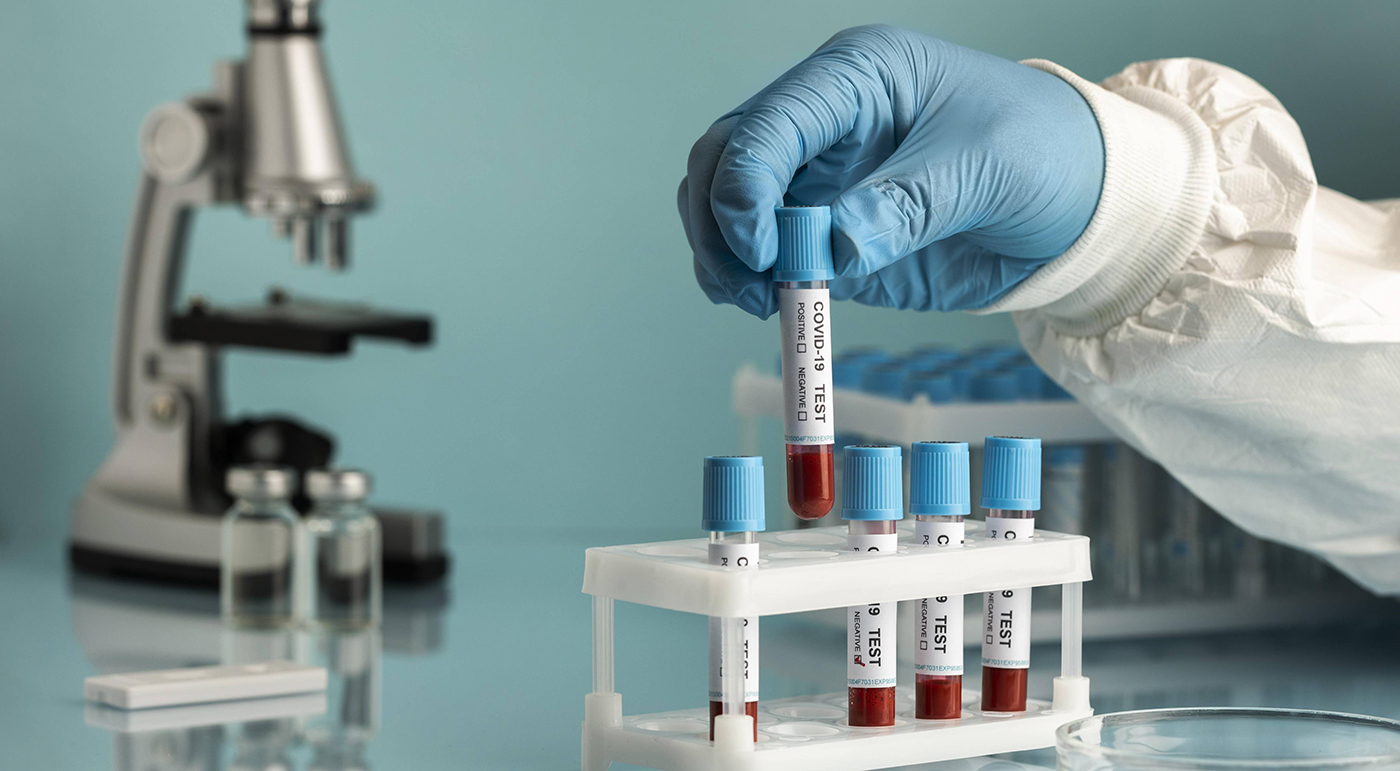
Understanding Essential Health Screenings

Health screenings are essential in preventive healthcare. They help detect potential health problems before they become serious, allowing for early intervention and treatment. These screenings are like a roadmap, guiding you towards better health by catching potential issues early. Have you ever wondered what those routine health tests your doctor orders are all about? This guide will break down some common health screenings, explaining their purpose and significance in simple, relatable terms.
Complete Blood Count (CBC): The Body’s Health Report Card
A Complete Blood Count (CBC) is like a report card for your blood. It measures different components, such as red blood cells, white blood cells, and platelets. This test can reveal infections, anemia, and even signs of certain cancers. If your CBC results are off, it could mean your body isn’t getting the oxygen it needs, or you might be at risk for infections and other complications, making it a crucial indicator of overall health.
Random/Fasting Blood Glucose: The Sugar Tracker
Checking your blood glucose levels, whether random or fasting, is crucial for detecting diabetes. Imagine your bloodstream as a highway, and glucose as the cars. Too many cars (high blood sugar) can cause traffic jams, leading to serious complications. This test ensures your “traffic” is flowing smoothly, helping prevent severe complications like nerve damage and cardiovascular issues.
HbA1c: The Long-Term Glucose Gauge
The HbA1c test measures your average blood sugar levels over the past 2-3 months. It’s like a weather forecast, showing you the overall trend of your blood sugar levels. Consistently high HbA1c levels indicate poor blood sugar control, putting you at risk for diabetes-related complications such as vision loss, heart disease, and kidney damage.
Lipid or Cholesterol Profile: The Heart Health Monitor
A lipid profile checks your cholesterol levels, including HDL (good cholesterol), LDL (bad cholesterol), and triglycerides (a type of fat in your blood that stores unused calories). High levels can lead to plaque buildup in your arteries, much like a clogged pipe, which can eventually cause heart disease or stroke. Maintaining healthy cholesterol levels is vital for a healthy heart and avoiding cardiovascular problems.

Erythrocyte Sedimentation Rate (ESR): The Inflammation Detective
The ESR test measures how quickly red blood cells settle at the bottom of a test tube. Fast sedimentation can indicate inflammation in the body. This test acts like a smoke detector, alerting you to underlying inflammation that might need further investigation, which could be a sign of conditions like autoimmune diseases, infections, or cancer.
Kidney Function Tests: The Body’s Filtration Check
Kidney function tests, such as creatinine and blood urea nitrogen (BUN), assess how well your kidneys are filtering waste from your blood. Your kidneys are like a coffee filter; if they’re not working properly, toxins can build up in your body, potentially leading to chronic kidney disease, high blood pressure, anemia, and nerve damage.
Liver Function Tests: The Detox Department’s Report
Liver function tests measure enzymes and proteins in your blood that indicate how well your liver is working. Your liver is your body’s detox department, processing everything you consume. If it’s not functioning properly, toxins can accumulate, leading to liver disease, hepatitis, or cirrhosis, which can result in jaundice, bleeding disorders, and liver failure.
Thyroid Screen: The Metabolism Manager
A thyroid screen checks your thyroid hormone levels to ensure your thyroid gland is functioning properly. Your thyroid is like your body’s thermostat, regulating your metabolism. An imbalance can cause issues like weight gain, fatigue, and mood swings. If left untreated, thyroid imbalances can lead to conditions like hypothyroidism or hyperthyroidism, affecting your energy levels and overall health.

Bone Mineral Status: The Bone Strength Indicator
A bone mineral density test measures the strength of your bones, detecting conditions like osteoporosis. Imagine your bones as the framework of a building; strong bones keep the structure solid, while weak bones can lead to fractures and other issues. Low bone density increases the risk of fractures and osteoporosis, impacting your mobility and overall quality of life.
Basic Immunology: The Immune System Check
Basic immunology tests evaluate your immune system’s response to infections and diseases. Your immune system is your body’s defense team, and these tests ensure it’s ready to fight off invaders. A weak immune response can leave you vulnerable to infections and diseases, compromising your overall health and resilience.
Hepatitis B Screening: The Liver Protector
Hepatitis B screening checks for the Hepatitis B virus, which can cause serious liver damage. Early detection is crucial for preventing liver disease and ensuring proper treatment. A positive result can lead to chronic hepatitis B infection, increasing the risk of liver cirrhosis and liver cancer.
Urinalysis: The Urinary System’s Status Report
A urinalysis examines your urine for signs of kidney disease, diabetes, and urinary tract infections. Think of it as a maintenance check for your urinary system, ensuring everything is functioning smoothly. Abnormal results can indicate infections, kidney disease, or diabetes, requiring further investigation and management.
Stool Occult Blood Test: The Digestive Health Detective
This test checks for hidden blood in your stool, which can indicate issues like colon cancer or gastrointestinal problems. It’s like a detective looking for clues that might indicate a deeper issue. Hidden blood in stool can signify colon cancer, requiring immediate follow-up and treatment.
Chest X-Ray: The Lung and Heart Snapshot
A chest X-ray provides images of your lungs and heart, helping detect conditions like pneumonia, lung cancer, and heart problems. It’s a quick and painless way to get a clear picture of your chest’s health. Abnormal results can indicate infections, lung disease, or heart problems, necessitating further investigation and treatment.
Electrocardiogram (ECG): The Heartbeat Monitor
An ECG records the electrical activity of your heart, detecting irregularities like arrhythmias and signs of heart disease. It’s like a recording of your heart’s rhythm, ensuring it’s beating properly. Irregularities in ECG can signal heart disease or arrhythmias, leading to an increased risk of heart failure or stroke.
Prostate Cancer Screening: The Prostate Health Protector
Prostate cancer screening, including the PSA test, helps detect prostate cancer early. Early detection is key for effective treatment and can significantly improve outcomes. Elevated PSA levels can indicate prostate cancer, requiring further tests and potential treatment.
Pap Smear: The Cervical Health Guardian
A Pap smear tests for abnormal cells in the cervix that could indicate cervical cancer or precancerous conditions. It’s like a security check for your cervix, ensuring everything is as it should be. Early detection of abnormal cells can prevent cervical cancer, making this test crucial for women’s health.
Pelvic Ultrasound: The Reproductive System’s Lookout
A pelvic ultrasound provides images of the reproductive organs, helping detect conditions like ovarian cysts, fibroids, and other abnormalities. Think of it as a window into your reproductive health, offering insights that can guide treatment and prevent complications. Detecting issues early can prevent infertility, chronic pain, and other reproductive health problems.
Mammogram or Breast Ultrasound: The Breast Health Protector
A mammogram or breast ultrasound checks for lumps or abnormalities in the breast tissue, which can indicate breast cancer. This screening is like a safety net, catching potential issues before they develop into more serious problems. Early detection of breast cancer significantly improves the chances of successful treatment and recovery.

Understanding and regularly undergoing these essential health screenings can make a significant difference in maintaining your overall health. Just like regular maintenance keeps your car running smoothly, they provide valuable insights into how your body is functioning, allowing for early detection and treatment of potential issues. Remember, staying informed and proactive about your health is the best way to ensure a healthier future. Schedule your health screenings here.
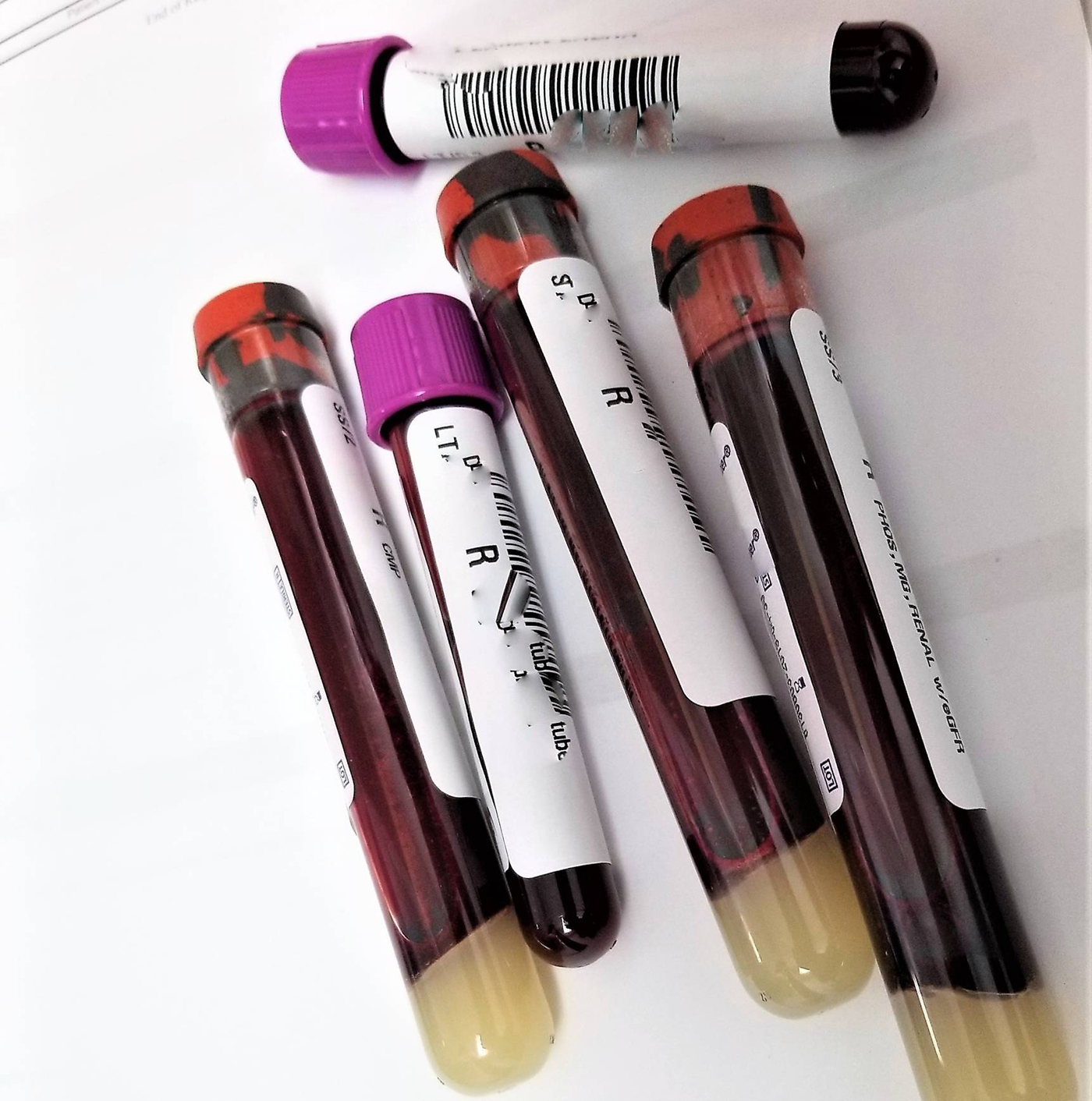
How Health Screenings Tests Keep The Body At Optimal Function
Like superheroes need regular check-ups and maintenance on their gear, our bodies benefit greatly from regular health screenings. These proactive tests can identify potential health issues early on, often before you even experience any symptoms. Early detection is key, as it allows for timely treatment and management, leading to a healthier, happier you. How do these essential tests keep different parts of your body functioning at their best? Let’s find out!
Blood Tests: Unmasking Hidden Health Threats
First up, we have our blood tests. These tests analyze your blood, revealing valuable clues about your internal health.
- Complete Blood Count (CBC): This test checks your red and white blood cells, platelets, and hemoglobin. It can detect signs of anemia, infection, or blood disorders, helping you address these issues promptly.
- Blood Sugar Tests (Random/Fasting Blood Glucose and HbA1c): These tests measure your blood sugar levels, crucial for detecting diabetes or prediabetes early. Early detection allows for lifestyle changes and treatment to prevent complications.
- Lipid Profile: This test measures your “good” and “bad” cholesterol levels, along with triglycerides, assessing your risk for heart disease and stroke. Keeping cholesterol in check is vital for cardiovascular health.

Comprehensive Body System Assessments
- Health screenings extend beyond blood work, targeting various body systems to keep them functioning smoothly.
- Urinalysis: This simple test analyzes your urine to detect potential problems like urinary tract infections, kidney issues, or diabetes.
- Stool Occult Blood Test: This test checks for hidden blood in your stool, which could indicate digestive problems like colon cancer.
- Liver Function Tests: These tests measure enzymes and proteins in your blood, assessing the health of your liver and detecting liver diseases early.
- Kidney Function Tests: These tests evaluate how well your kidneys are filtering waste from your blood, crucial for preventing chronic kidney disease.
- Basic Immunology Panel: This panel evaluates your immune system’s functionality, detecting immune deficiencies and autoimmune disorders.

Ensuring Bone Health
Don’t forget your bones. The Bone Mineral Density (BMD) test is like a report on your bone strength. It helps detect osteoporosis, a condition that weakens bones and increases fracture risk. Early detection allows for treatments that prevent fractures and maintain strong bones.
Detailed Imaging for Specific Health Concerns
Sometimes, a closer look is necessary. Imaging tests provide detailed insights into specific health concerns.
- Chest X-Ray: This imaging test provides a view inside your chest, helping detect issues like pneumonia, heart problems, or lung abnormalities.
- Electrocardiogram (ECG): This test measures the electrical activity of your heart, detecting abnormalities in heart rhythm and structure, crucial for diagnosing cardiac issues.
- Mammogram: An x-ray of the breast that detects breast cancer early, increasing the chances of successful treatment.
Prostate Health Screening for Men
- For men’s health, prostate screening plays a vital role. The Prostate-Specific Antigen (PSA) Test measures the level of PSA in the blood, which can be an early indicator of prostate cancer. Early detection through regular screenings can lead to better management and treatment outcomes, reducing the risk of advanced prostate cancer.
Essential Screenings for Women’s Health
- For women’s health, we have the Pap smear and HPV test duo. These tests work together to screen for cervical cancer and precancerous changes. Early detection is crucial for preventing cervical cancer and ensuring timely treatment.

Taking Charge of Your Health
Health screenings are your allies in maintaining optimal health. Talk to your doctor about which screenings are right for you based on your age, family history, and overall health. By taking a proactive approach to your health, you can empower your body’s superheroes and live a long, healthy life.
Remember, regular health screenings play a crucial role in early detection and prevention of potential health issues. Make them a part of your healthcare routine to ensure you stay on top of your health game. Schedule your next health screening here and take the first step towards a healthier future.

How Often Should You Have General Wellness Screenings?
General wellness screenings are essential for maintaining good health and detecting potential problems early. Like routine maintenance for your car; they keep everything running smoothly and catch issues before they become big problems. How often should you have these screenings? The frequency of these screenings can depend on several factors, including age, gender, and overall health. Let’s explore the different factors.

Age: The Key Factor in Screening Frequency
Under 30: Establishing a Baseline
In your 20s, annual wellness check-ups are generally sufficient to establish a health baseline. These visits include basic tests like blood pressure, cholesterol levels, and a complete blood count (CBC). If there’s a family history of certain conditions, more frequent screenings might be recommended.
Ages 30-50: Monitoring Changes
As you enter your 30s and 40s, annual check-ups remain important to monitor changes. Additional screenings for conditions like diabetes and thyroid disorders may be added. Women should consider mammograms and pelvic ultrasounds around age 40, while men should discuss prostate screenings by age 50.
Over 50: Staying Vigilant
For those over 50, more frequent screenings are crucial. Annual visits should include tests for blood glucose levels, kidney and liver function, and bone mineral density. Both men and women should consider colonoscopies for colorectal cancer screening. Women should continue regular mammograms, and men should maintain prostate screenings.

Gender: Tailoring Screenings to Your Needs
Women: Focused Health Checks
Women should start pap smears and pelvic ultrasounds in their 20s and continue as recommended. Mammograms become vital from age 40 onward for early detection of breast cancer. Bone density tests should also be discussed around menopause.
Men: Specialized Screenings
Men should monitor prostate health starting around age 50 with regular exams for early detection of prostate cancer. Regular checks for cholesterol and blood pressure are essential as men are more prone to cardiovascular issues.

Overall Health: Individualized Screening Plans
Chronic conditions like diabetes, heart disease, or hypertension require more frequent monitoring. Your doctor will tailor a screening schedule that may include regular blood tests, kidney and liver function tests, and more frequent blood pressure checks.
Family History: Early and Often
A family history of certain conditions may require earlier and more frequent screenings. For instance, if heart disease is familial, cholesterol and blood pressure checks might start earlier. Cancer history might necessitate more frequent mammograms or colonoscopies.
Lifestyle Factors: Adjusting Frequency
Lifestyle choices influence screening needs. Smokers should have more frequent lung health checks, while sedentary individuals may need regular screenings for diabetes and heart disease. Healthy diets and exercise can sometimes reduce screening needs but discuss with your doctor first.
When to Seek Additional Screenings
Even with regular check-ups, seek additional screenings if you experience unexplained symptoms like persistent fatigue, sudden weight changes, or unusual pain. Prompt attention to symptoms ensures timely management and treatment.
Staying proactive with regular wellness screenings is essential for maintaining your health. While general guidelines provide a starting point, work with your doctor to create a personalized screening schedule that meets your specific needs. Early detection through screenings can significantly impact treatment outcomes and overall well-being. So, schedule those appointments and invest in your long-term health. Your future self will thank you. Book an appointment here for your wellness screening and ensure peace of mind for yourself and your family. Early detection saves lives – make it a priority. Schedule your screenings here
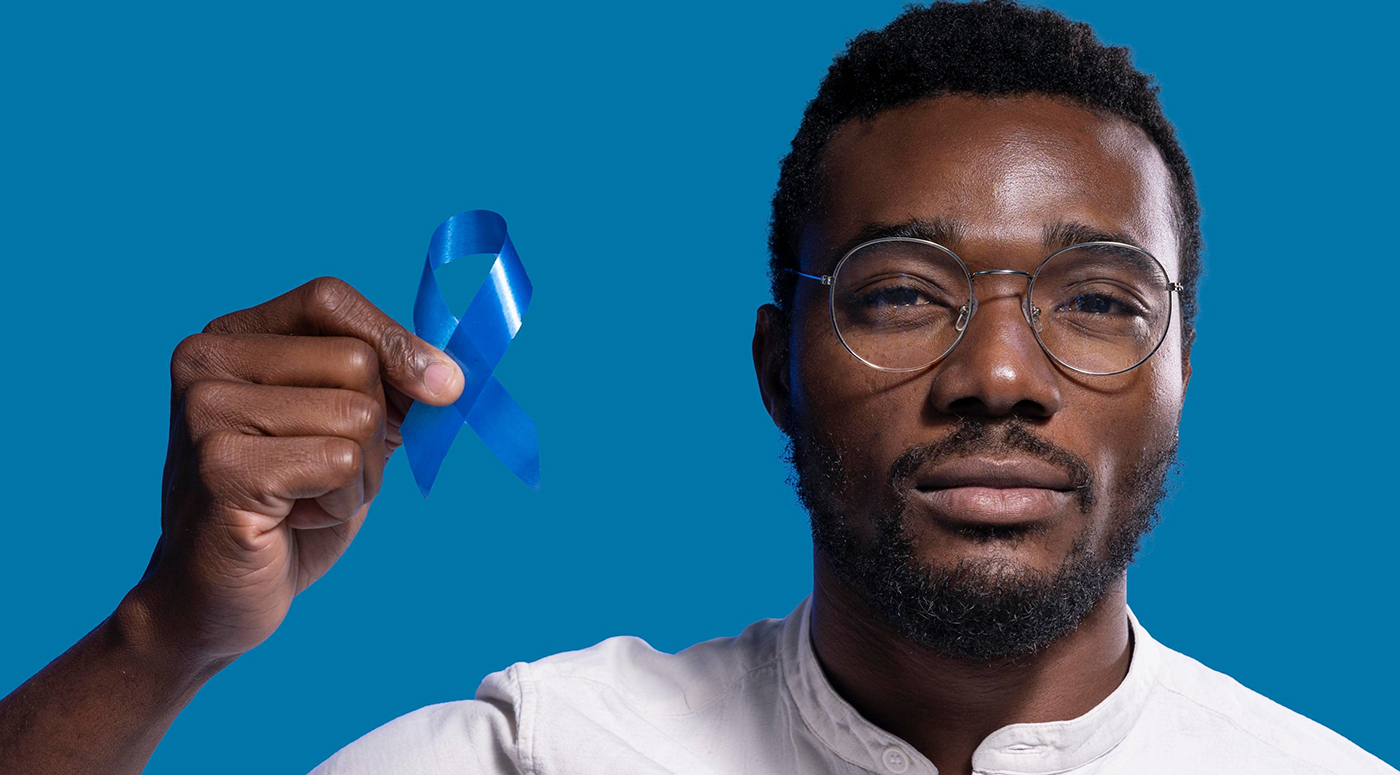
Prostate Issues? Crack the Code with our Expert Guide!
Prostate Issues? Crack the Code with our Expert Guide!
As men age, various health concerns may arise, and one common condition that often makes its appearance is Benign Prostatic Hyperplasia, more commonly known as BPH. No need to break a sweat; it’s just your prostate playing a little hide and seek as you age. But what does that mean for you?
Understanding the Basics
The prostate, a small but vital gland, tends to enlarge as men age, leading to BPH. This enlargement can exert pressure on the urethra, causing an array of urinary symptoms.
Spotting the Signals
- Urinary Frequency: Urinating more frequently, especially during the night? You’re not alone.
- Urgency: A sudden, compelling need to urinate? That might be BPH.
- Weak Stream: A weakened or slow urinary stream? BPH might be pulling a fast one.
- Incomplete Emptying: A sensation that the bladder hasn’t completely emptied? Classic BPH.
- Straining: Difficulty initiating urination? Hello, BPH!
When Should You Start Taking Prostate Issues Seriously?
While BPH symptoms typically show up later in life, some guys might experience signs as early as their 40s. That’s why having a chat with your doctor about prostate health and potential screening options starting around age 40 is a smart move, especially if BPH runs in your family.
Deciphering the Causes
While the exact cause of BPH remains elusive, age and hormonal changes, particularly an increase in dihydrotestosterone (DHT), seem to be pulling the strings. If you suspect BPH is gatecrashing your party, a quick chat with your doctor is in order.
What’s the End Game?
Left unchecked, BPH can throw a few curveballs, leading to urinary tract infections, bladder stones, and kidney damage. Regular check-ins with your doctor keep you in the driver’s seat.

A Gentle Touch for Prostate Woes: Prostate Artery Embolization
Now, imagine a remedy that doesn’t involve the ominous shadow of major surgery – that’s Prostate Artery Embolization (PAE), stealing the spotlight!
PAE is not a normal surgical procedure; it’s a non-invasive alternative, performed through a tiny incision in either your wrist or groin. This gentle touch turns the whole process into a walk in the park, allowing you to bounce back in no time. Forget the drama of traditional surgeries – PAE is like a secret pact promising relief without the headache.
Now, when it comes to the intimacy department, PAE does not pose risks such as infections, bleeding, or any post-procedure implications. As technology advances, PAE is rising as the MVP in prostate care. Its simplicity and effectiveness in tackling BPH symptoms present it as a saviour for those grappling with the challenges of a prostate that have decided to take up some extra space.
For men experiencing BPH, the first step is consultations with our trusted healthcare specialists to guide on the journey to healthy reproductive well-being.
Ready to bid farewell to BPH? Sign up here!

Euracare Gives Back: USD $50,000 in Discounts for Life-Changing Minimally Invasive Brain Surgeries

In a heartwarming display of corporate social responsibility, Euracare Advanced Diagnostic & Heart Centre has extended a helping hand to three deserving patients, offering them a total of $50,000 in discounts to undergo life-changing surgeries. This generous gesture underscores Euracare’s commitment to making quality healthcare accessible to all, regardless of financial constraints.
At Euracare, we believe that healthcare is a fundamental human right, and we are dedicated to ensuring that no one is denied the medical care they need due to financial limitations. Recognizing the importance of surgery in improving the quality of life for our patients, we are proud to offer these discounts as part of our ongoing efforts to give back to the community.
The recipients of these discounts were carefully selected based on their medical needs and financial circumstances. Each of these patients was struggling with a debilitating condition that required intervention, but the cost of treatment had been a barrier to accessing the care they deserved. Thanks to Euracare’s support, these individuals had the opportunity to undergo the surgeries they desperately needed, without the burden of excessive financial strain. Two of these patients had Arteriovenous Malformation (AVM) of the brain while the 3rd patient had Carotid Cavernous Fistula (CCF). All procedures were successfully done by the Euracare treatment team led by Prof Benjamin Sarkodie. The patients have since been discharged.
This initiative is just one example of Euracare’s dedication to serving our community beyond the walls of our clinic. We believe that by investing in the health and well-being of those around us, we can make a meaningful difference in their lives and contribute to building a healthier, happier society.
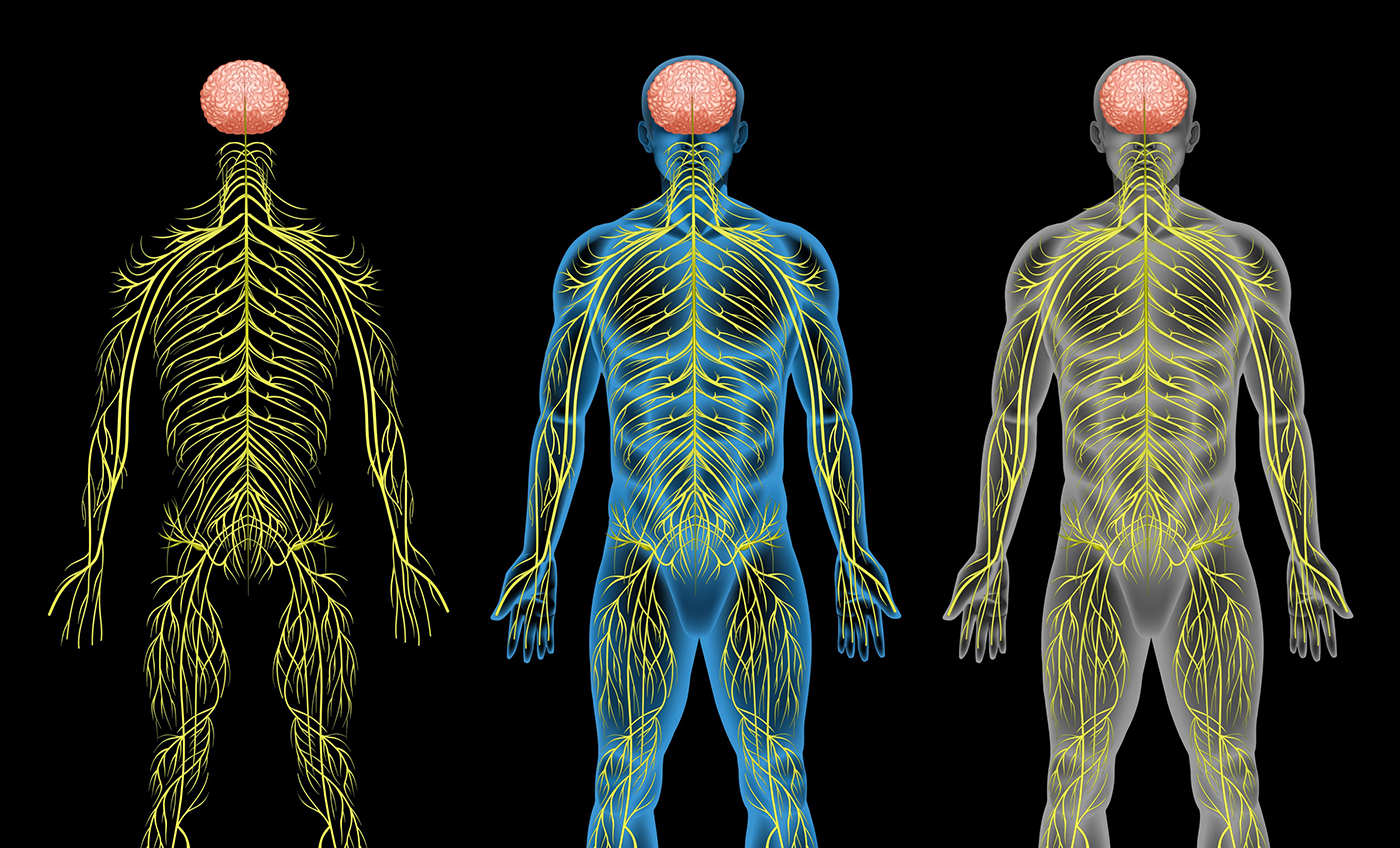
Understanding Carotid-Cavernous Fistula: How Interventional Radiology Comes to the Rescue

Think of your blood vessels as rivers and streams in your body. Arteries are like powerful rivers rushing blood away from the heart to nourish your tissues, while veins are like gentle streams bringing blood back to the heart. Now, imagine a new stream branching off from a river, taking a detour where it shouldn’t. That’s what happens with Carotid-Cavernous Fistula (CCF).
What is CCF?
Carotid-Cavernous Fistula is a condition where an abnormal connection forms between an artery in your neck called the carotid artery and a vein in your skull called the cavernous sinus. This creates a direct pathway for blood to flow where it shouldn’t, bypassing the normal routes.
What Causes CCF?
CCF can occur due to various reasons. Sometimes, it’s the result of trauma, like a car accident or head injury, that damages the blood vessels. In other cases, it might develop spontaneously, without any apparent cause. Regardless of the cause, CCF can lead to serious complications if left untreated.

Symptoms of CCF
The symptoms of CCF can vary depending on the severity of the condition and how quickly it develops. Common symptoms may include bulging or pulsating eyes, double vision, vision loss, eye redness, or even hearing a pulsating sound in the ear. Some people may also experience headaches, facial pain, or vision changes.
Implications of CCF
CCF can disrupt the normal flow of blood and pressure in the affected blood vessels, leading to symptoms like those mentioned above. If left untreated, it can cause further complications such as vision loss, stroke, or even brain damage due to increased pressure within the skull.
How Interventional Radiology Helps
Interventional radiology comes to the rescue once again when it comes to treating CCF. Using advanced imaging techniques like angiography, interventional radiologists can precisely locate the abnormal connection between the carotid artery and cavernous sinus.

One common treatment for CCF is embolization. During this procedure, a thin tube called a catheter is guided through the blood vessels to reach the site of the CCF. Special materials, such as coils or liquid embolic agents, are then injected into the abnormal connection to block off the blood flow. This helps restore normal blood flow patterns and relieve pressure on the surrounding tissues.
In some cases, particularly if the CCF is complex or difficult to access, a combination of techniques may be used, including surgical approaches in conjunction with interventional radiology.
Thanks to these minimally invasive procedures, the symptoms of CCF can be alleviated without the need for major surgery. It’s like fixing a plumbing issue in your house without tearing down walls – less mess and quicker recovery!
So, if you find yourself facing the challenges of Carotid-Cavernous Fistula, remember that there’s a team of skilled professionals at Euracare ready to restore order to your body’s rivers and streams, bringing back smooth sailing and clear skies. Book your appointments and make inquiries here.
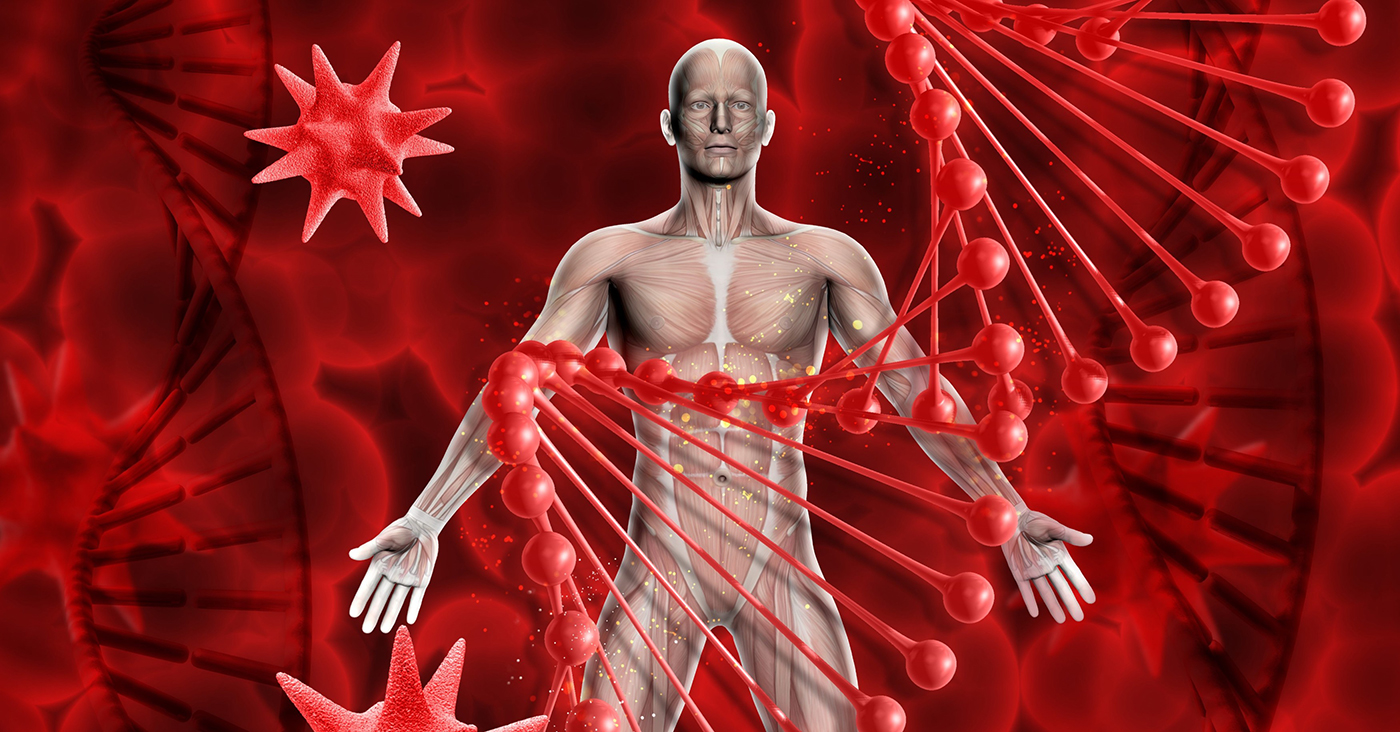
Understanding Arteriovenous Malformation (AVM) and Its Treatment with Interventional Radiology

Imagine your blood vessels, the roads that carry blood around your body, like little highways. Usually, they’re organized neatly, with arteries carrying fresh, oxygen-rich blood to your body’s tissues and veins taking the used blood back to the heart. But sometimes, something goes wrong, and that may be indication of Arteriovenous Malformation (AVM).
What is AVM?
Arteriovenous Malformation is a condition where there’s a problem with the way these blood vessels are connected. Instead of the normal pattern, arteries and veins are tangled up in a kind of messy knot. This can happen in different parts of the body, like the brain, spine, or other organs.
What Causes AVM?
The exact cause of AVM isn’t always clear. Sometimes, it’s just a fluke of nature, something that happens during a baby’s development in the womb. Other times, it might be due to genetic factors. Regardless of the cause, AVM can have serious implications.
Symptoms of AVM:
AVM can cause a variety of symptoms depending on where it’s located in the body. In the brain, symptoms might include severe headaches, seizures, weakness or numbness in parts of the body, or problems with vision or speech. In other parts of the body, symptoms can vary widely but may include pain, swelling, or even abnormal bleeding.

Implications of AVM:
One of the big concerns with AVM is that it can disrupt normal blood flow and pressure. Because the blood vessels are tangled and abnormal, it can put extra strain on the heart and make it harder for oxygen-rich blood to get where it needs to go. In the brain, this can lead to symptoms like headaches, seizures, or even more severe problems like strokes or brain bleeds.
How Interventional Radiology Helps:
Now, let’s talk about how doctors tackle AVM, particularly with a cool technique called interventional radiology. Interventional radiology uses imaging techniques like X-rays and special tools to treat conditions from inside the body without the need for big incisions.
When it comes to AVM, interventional radiologists use their expertise to navigate through the blood vessels and fix the problem right at its source. One common technique is called embolization. During embolization, a tiny tube called a catheter is guided through the blood vessels to reach the site of the AVM. Then, special materials, like tiny beads or coils, are carefully inserted to block off the abnormal blood vessels. This reroutes blood flow away from the AVM, reducing the risk of bleeding or other complications.
Another technique used in interventional radiology for AVM is called sclerotherapy. In this procedure, a special medication is injected into the abnormal blood vessels, causing them to shrink and eventually close off.
These minimally invasive procedures performed by interventional radiologists offer several benefits. They often result in shorter hospital stays, faster recovery times, and fewer complications compared to traditional surgery. Plus, they leave little to no scarring, which is a bonus!

Thanks to the expertise of interventional radiologists, AVM can be effectively treated, reducing the risk of complications and helping patients regain their quality of life. Euracare specializes in providing advanced medical care, including the diagnosis and treatment of this condition. Our team of experienced interventional radiologists is dedicated to delivering personalized care and innovative treatment options to our patients. If you suspect you may have AVM or are experiencing any related symptoms, we invite you to schedule a consultation with us here.

Gastric Sleeve Surgery
Trouble Losing Weight? Gastric Sleeve Has Got Your Back! Conquer the Hurdles of Weight Loss with Gastric Sleeve

Have you had a hard time managing your weight? Does it affect your self-confidence and well-being? Then, grab a seat and pay attention. This is for you!
You know how sometimes life throws a curveball, and we end up dealing with baggage that we don’t bargain for? Well, obesity is ‘that elephant in the room’.
Obesity is like that annoying family member who refuses to contribute towards a family function but eats to his fill and leaves the largest chunk of expenses afterward. Apart from the obvious change in appearance, having too much extra fat causes discomfort and brings along the risk of serious complications like heart problems, high cholesterol, and diabetes.
Now, the usual advice for shedding those extra pounds is eating right and exercising regularly, which sounds good in theory but is sometimes quite difficult to keep up with. Lately, some people opt for a different approach – a procedure called gastric sleeve surgery. It is like a secret weapon in the battle against extra fat.
How Does Gastric Sleeve Work?
Doctors put you to sleep, and by the time, you snap back to reality, a chunk of the bulging stomach would have transformed into a sleek, banana-shaped tube. This safe procedure is performed by making tiny cuts in your stomach.

Wondering Why Anyone Would Sign Up For This?
Well, it’s for those of us who have tried everything in the weight-loss playbook without much luck. If your body mass index (BMI) is doing the high jump over 40 or hanging out between 35 and 40 with some extra health challenges like snoring (loud enough to wake up the neighbours), high blood pressure, a cranky heart, sleep issues, or type 2 diabetes, doctors might suggest this surgery.
How Does It Work?
By making your stomach play the size game – smaller means less food can squeeze in, making you feel full quicker. Plus, it puts a muzzle on those hunger hormones, so you don’t find yourself raiding the fridge at midnight.

But, of course, there are some ground rules after the surgery. Watch what you eat, take some vitamins, and keep an eye out for trouble like nutrient deficiency or heartburn. And don’t forget the healthy habits – eating right and getting off the couch as often as possible.
Before you dive into this adventure, doctors want to make sure you are ready to face your new normal head-on. You might join a program to get a full grasp of the surgery and what happens next – counselling, tests, and maybe pressing a pause on certain medications or dropping a few pounds before the big day.
What Happens Post-Surgery?
Now, after the storm, it’s a gradual return to normal eating. It is usually advised to start with liquids, before moving on to soft foods, and eventually regular food, but in snack-sized portions.
After a successful procedure, it’s not a free pass to eat carelessly. Keep an eye on your diet, take your vitamins, and schedule regular check-ups to make sure everything is in shape.
The road to becoming healthier and shedding those extra pounds can be a murky road. Just remember, it’s not a magic fix – you’ve still got to put in the work, eat well, and stay active.

Weight loss begins with you. You decide. Let us be your guide!
For consultation on available weight management options, sign up here!

Euracare Celebrates Dr. Benjamin Sarkodie’s Landmark Appointment by University of Ghana

Euracare is thrilled to share the groundbreaking achievement of its Medical Director, Dr. Benjamin Dabo Sarkodie. The University of Ghana Medical School has conferred the title of Associate Professor of Interventional Radiology upon Dr. Sarkodie, a first in Ghana’s medical history.
Dr. Sarkodie’s journey began with academic excellence, earning his Bachelor of Medicine and Surgery from Kwame Nkrumah University of Science and Technology, Kumasi, Ghana. He completed his Diagnostic Radiology fellowship at Korle-Bu Teaching Hospital. Driven by a global quest for knowledge, Dr. Sarkodie secured prestigious sub-specialization fellowships from multiple institutions: the University of Pennsylvania, USA, Singapore General Hospital, and Seoul National University, South Korea.
At Euracare, Dr. Sarkodie’s visionary leadership has been transformative. As Head of Radiology and later as Medical Director, he has navigated the hospital towards unparalleled growth and excellence in advanced diagnostics and care. His expertise has played a critical role in establishing Euracare as a pioneer of several interventional radiology procedures, notably brain aneurysm coiling. This has solidified its reputation as a hub for cutting-edge minimally invasive interventions in West Africa.

This significant appointment underscores Dr. Sarkodie’s unparalleled expertise and emphasizes Euracare’s commitment to nurturing top-tier medical talent. As Vice President of the Ghana Association of Radiologists, Dr. Sarkodie’s influence promises continued advancements in the field, further elevating both Euracare’s stature and Ghana’s healthcare trajectory.
Congratulations, Prof. Benjamin Sarkodie! Your story is an inspiration, a testament to the power of dedication and vision. With each pioneering procedure, you write a new chapter in Ghana’s healthcare narrative, one filled with hope for a brighter, healthier future – a future where excellence thrives.

Battling Uterine Fibroids: A Guide for Superwomen
Hey there, fabulous ladies!
Have you ever heard of uterine fibroids? They are like those uninvited guests crashing the party in your uterus. But do not worry, we have got the lowdown on these pesky things and a superhero solution!
What Are Uterine Fibroids?
Picture this: noncancerous growths having a party in your uterus. They are called uterine fibroids, and they are like the common cold of the female world. Up to 80% of us might get them before the menopause stage. They come in all shapes and sizes, from tiny peas to grapefruits.
Why Do They Exist?
Nobody is sure why these fibroids decide to show up, but they might have a thing for genetics and hormones. Estrogen and progesterone, the power players in our menstrual cycle, could be behind the scenes, cheering these fibroids on. Luckily, they tend to chill out after menopause.

Spotting the Intruders
Some of us might host these fibroid parties without even knowing it. But when they decide to make a scene, you could experience heavy periods, cramps that feel like a rock concert in your pelvis, and even some unwanted pressure on your bladder or rectum.
The Impact on Your Awesome Life
These fibroids are not just party crashers; they can seriously mess with your mojo. Imagine heavy bleeding leading to anaemia and fatigue, or pelvic pain trying to ruin your workout routine. They might even play a hand in fertility problems and pregnancy hiccups. Rude, right?

Enter the Super Solution: Uterine fibroid embolization (UFE)
Now, here is the game-changer! UFE is like sending in a superhero squad to tackle these fibroids head-on, without the need for major surgery. It is a procedure where tiny particles block the fibroids’ food supply, making them shrink like magic.
Why Choose UFE?
Think of UFE as the VIP treatment for fibroids. It is safer, less painful, and involves way less downtime than traditional surgeries. Plus, it keeps your uterus intact, so future baby plans? Still on the table!
Happy Endings and Shrunken Fibroids
Ladies who have embraced UFE report a serious upgrade in their quality of life. Within a year, those fibroids shrink by half, giving you sweet relief from those never-ending periods and annoying pressure symptoms.

When to Consider UFE
Thinking about inviting UFE to your fibroid party? Chat with your gynaecologist or an interventional radiologist. They will help you figure out if it is the right move based on factors like fibroid size, number, and your future family plans.
So, there you have it, superheroes! UFE might just be the cape you need to kick those fibroids to the curb. Say goodbye to the party crashers and hello to a life without the fibroid drama!
Euracare has got your back, start your fibroid treatment journey, fill out this short form to book an appointment or speak to a healthcare professional.
Find Relief, Renewed Wellness and Empowerment –
Sign Up for Fibroid Freedom
Speak to a Specialist at Euracare Now!




